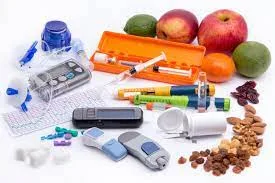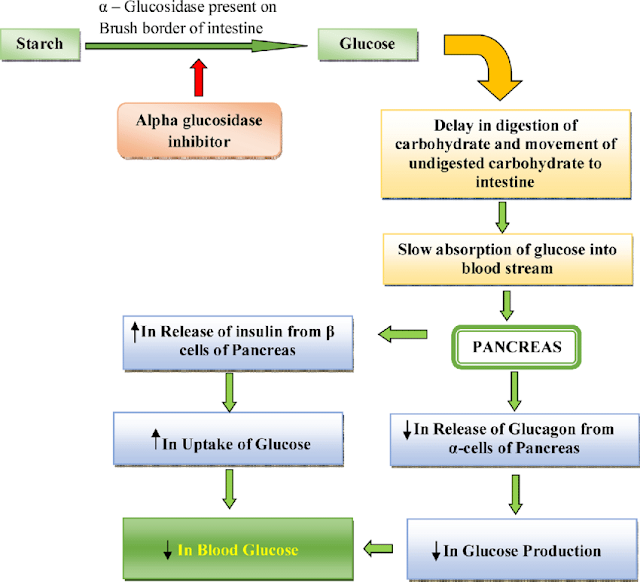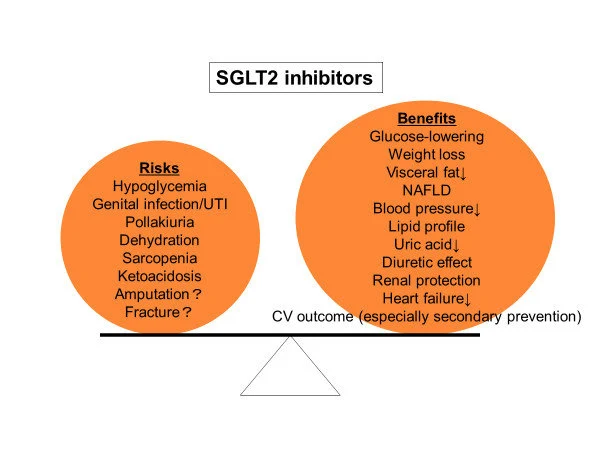Diabetes Medication Side Effects
There are many types of diabetes treatment drugs, and
different types of drugs have different side effects. They are biguanides,
sulfonylureas, thiazolidinediones, alpha diabetes suppressants,
non-sulfonylurea secretagogues, DPP- 4 inhibitors, SGLT-2 inhibitors, etc.,
side effects may also occur.
For tele-consultancy from any part of the world one may contact teledoctor at biotb.com
For providing or getting the Best Telehealth, Telegym services and fitness networking may log in to this network.
The side effects of diabetes drugs are mainly divided into the following aspects:
1. The positive effect directly brings side effects, such as excessive blood sugar drop, below 3.9mmol/L, hypoglycemia will occur. Originally high blood sugar becomes low blood sugar, and low blood sugar becomes an adverse reaction.
Because the human brain mainly relies on glucose for energy, if hypoglycemia occurs, the brain will have no energy, and behavior, consciousness, breathing, and heartbeat are dominated by the brain.
Severe hypoglycemia in the brain may endanger life, intelligence, and cognitive
functions.
2. Other side effects are mainly related to the mechanism of action. For example, α-glucosidase inhibitors are also commonly used hypoglycemic drugs, and hypoglycemia rarely occurs.
Because the mechanism of action is in the gastrointestinal tract, mainly reducing or delaying food absorption, the main adverse reactions are in the gastrointestinal tract. Because the absorption of food is too slow, there are many bacteria in the intestine, and the bacteria will increase gas production, which will cause increased gas and abdominal distension.
Therefore, the side effects of different hypoglycemic drugs are not the same, mainly gastrointestinal reactions and hypoglycemia.
Condition analysis: The side effects of diabetics taking hypoglycemic drugs are common hypoglycemia, as well as skin lesions, etc.
The
details are as follows:
1. Hypoglycemia: For example, taking sulfonylurea drugs
mainly stimulates insulin secretion, which can easily lead to hypoglycemia. If
insulin is used to control blood sugar, the biggest side effect is
hypoglycemia.
2. Skin lesions: Some people are allergic to sulfonylureas,
which can also cause drug rashes, damage to liver and kidney functions, and
neutropenia.
3. Gastrointestinal discomfort: If it is metformin, then some
people have gastrointestinal intolerance causing stomach discomfort, nausea,
vomiting, etc. Long-term consumption of metformin should be supplemented with
vitamin B12, because long-term consumption of metformin will affect the
absorption of B12.
4. Others: Long-term use of insulin is also likely to cause
abdominal obesity, which will increase insulin resistance and visceral fat
deposition, resulting in increased risk of fatty liver, cardiovascular and
cerebrovascular, and increased blood viscosity.
The side effects of these drugs are often different according to the type and composition of the drugs, and the side effects of these drugs will also be different. Therefore, taking diabetes drugs should be based on different types of drugs to prevent these side effects.
There are many types of medicines for diabetes, there are six oral medicines, and insulin. The most commonly used oral medicines are as follows:
What are the side effects of Metformin?
The first category of diabetes drug is is metformin. The side effects are mainly to affect appetite, which can cause gastrointestinal reactions, especially when you start taking it, you may experience nausea and vomiting. However, after 1-2 months of use, these adverse reactions are often significantly relieved.
In addition, in patients with renal insufficiency and elevated creatinine, metformin is not suitable.
There are many people out there who spread wildly
that metformin can cause kidney damage. This is not correct. It only reaches patients
with renal insufficiency, because there is no way to effectively excrete
metformin, so metformin is not suitable.
What are the Side Effects of Glycosidase Inhibitor?
The second category is the glycosidase inhibitor, which is
the commonly eaten Baitangping. The side effects of this type of drug are mainly
abdominal distension, flatulence, and even diarrhea.
The third category, oral hypoglycemic drugs are sulfonylurea
hypoglycemic drugs, such as Deltacon, which mainly cause hypoglycemia, can
cause weight gain, and even cause skin allergies in some patients.
The drugs mentioned above have no obvious side effects on the liver and kidneys. There is also a class of oral hypoglycemic drugs that are insulin secretagogues, such as Ruitong and pioglitazone. A few people may experience edema after taking this drug, which will disappear after stopping the drug.
The main side effect of insulin is weight gain, so for obese people, insulin should be used as little or as little as possible.
In addition, some patients may experience skin allergies, redness, swelling and lumps at the injection site, and hypoglycemia may occur. The main side effects are these.
1. What are the side effects of Biguanide drugs?
They are widely used in clinical practice
and belong to first-line drugs. The side effects of biguanide drugs are mainly
gastrointestinal symptoms, such as dry mouth, bitter taste, anorexia, nausea,
vomiting, and diarrhea. Lactic acidosis can also be induced.
2. What are the side effects of Sulfonylurea drugs?
The main side effect is hypoglycemia, which is generally related to excessive dose, improper diet, simultaneous use of long-acting preparations, or drugs that enhance the hypoglycemic effect of sulfonylureas.
In addition, it can lead to weight gain, and occasionally
gastrointestinal symptoms such as nausea, vomiting, and indigestion;
3. What are the side effects Thiazolidinediones?
These are also known as insulin sensitizers, the
main side effects are edema, weight gain, dizziness, headache, fatigue, etc.
4. What are the side effects Alpha-diabetes inhibitory drugs?
It is also a class of drugs commonly used in clinical practice.
When diabetic patients use
alpha-diabetes inhibitory drugs, the main side effects are abdominal distension,
increased gas, abdominal pain and diarrhea.
5. What are the side effects Non-sulfonylurea secretagogues?
The side effects of these
drugs can also cause hypoglycemia, may also cause transient liver damage, and
may cause gastrointestinal reactions such as nausea, vomiting, indigestion, etc.
6. What are the side effects DPP-4 inhibitors?
The main side effects of these drugs are
pharyngitis, headache, upper respiratory tract cold, etc., as well as some
clinically rare hypersensitivity reactions, or elevated liver enzymes, but
these reactions are relatively rare.
7. What are the side effects What are the side effects SGLT-2 inhibitors?
These hypoglycemic drugs may increase
the risk of urinary tract infection, and may also have side effects such as
hypoglycemia, polyuria, back pain, genital infection, dyslipidemia, and
increased hematocrit.
8. What are the side effects Other drugs related to high blood sugar?
There are also some insulin and GLP-1
receptor agonist injection preparations. The main side effect is that excessive
use is prone to hypoglycemia. Patients should take medication under the
guidance of a doctor, and should not be afraid of insulin.
In what categories can the side affects of diabetes drugs be divided into?
The side effects of diabetes drugs are divided into the
following categories:
- First, sulfonylurea drugs, such as glimepiride, glipizide, gliclazide, etc., the most common side effect is to cause hypoglycemia.
- Second, metformin, a common side effect of gastrointestinal tract, patients may experience abdominal pain, nausea, vomiting, diarrhea after oral administration.
- Third, insulin sensitizers, such as rosiglitazone and pioglitazone, are easy to cause edema, so they are not suitable for patients with heart failure orally. Fourth, the common side effect of glycosidase inhibitors such as acarbose is that patients will experience abdominal distension and increased gas after eating.
Conclusion
Disease analysis: The side effects of diabetes drugs can be divided into the following categories of drugs: First, sulfonylurea drugs, such as gliclazide, glimepiride, glipizide, etc., the most common side effect is hypoglycemia. The second is metformin, which is likely to cause side effects in the gastrointestinal tract. Patients will show abdominal pain, vomiting, diarrhea, and nausea after taking the drug. The third is insulin sensitizers, such as pioglitazone, rosiglitazone, etc. These drugs are easy to cause edema, so patients with heart failure are not suitable for oral administration. The fourth is glycosidase inhibitors, such as acarbose, the more common side effects are abdominal bloating and increased gas.
In addition to drug treatment, patients with diabetes should
also develop good living habits. If they should pay attention to their diet and
control the intake of staple foods, they can use whole grains and vegetables
instead. They should also pay attention to exercise and monitor blood sugar
daily. Go to the hospital in time to adjust the medication.
Author's Bio
Name: Gwynneth May
Educational Qualification: MBBS, MD (Medicine) Gold Medalist
Profession: Doctor
Experience: 16 Years of Work Experience as a Medical Practitioner











Comments
Post a Comment